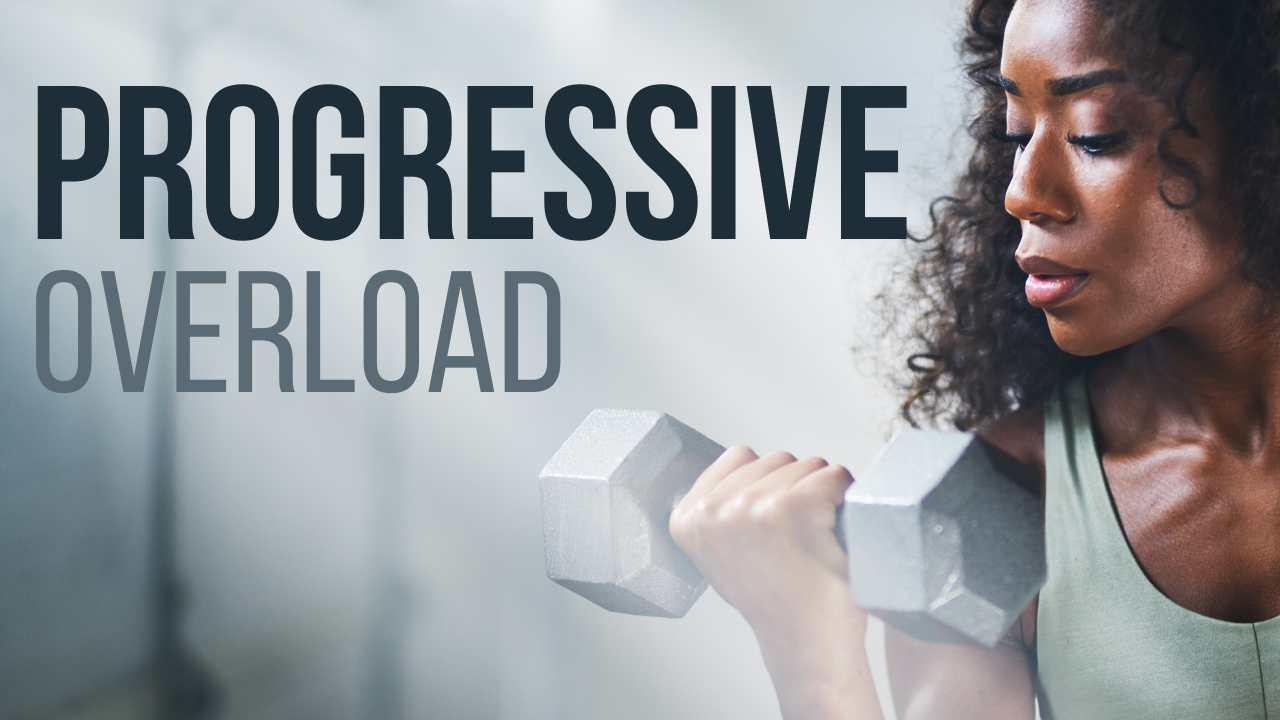
Stop Wasting Time in the Gym: Make the Most Out of Your Strength Training via Progressive Overload
Apr 01, 2022Are you wasting your time at the gym?
It’s Coach Laney here, and I’m asking the tough questions here.
So many of us spend hours in the gym week after week and feel frustrated when we don’t see the results.
I used to go to the gym religiously six times a week, doing random weight training circuits and cardio every single time.
There were even a couple of months where I attended 5 am bootcamps, which were just more circuits and cardio.
Did this help me look or feel the way I wanted? Nope.
I had very little muscle mass, was not "toned," and could never lift more than what I started with.
I wanted to be strong. I wanted to build muscle and look lean. But I was doing WAY too much of the wrong stuff.
Then I learned that random circuits aren’t the answer. Progressive overload is key to building that dream body!
If you’re in the same situation, it’s likely because you aren’t training effectively to produce progressive overload. If you want to gain muscle mass and build your dream physique, progressive overload should be your main focus!
What is Progressive Overload?
Progressive overload is a concept where you work to continually increase the demands on your musculoskeletal system to gain muscle size, strength, and endurance. You do this when you slowly increase your weights, reps, or time under tension while exercising.
Progressive overload prevents you from plateauing because you’re consistently challenging yourself by adding extra tension to your muscles.
But it isn’t just for strength training. You can also apply progressive overload to your cardio workouts to improve cardiovascular health.
How to Achieve Progressive Overload
If you want to get stronger and look leaner, prioritizing a STRUCTURED weight training plan for AT LEAST 4-6 weeks at a time is a good start. Stay consistent, and the results will follow.
But before you get too excited about increasing resistance, make sure you start with proper form and range of motion. Once you’ve got that sorted, then you can begin to push yourself.
(PS, we can help you learn how to do this in our 4-Week Fit Foundations course — we’ll provide you with templates and everything!)
As a general rule of thumb, if you can easily do 3-4 sets of 10 reps, you should increase weight. Those last 2-3 reps should feel pretty dang hard!
As you become more comfortable with the concept of progressive overload, you can begin to incorporate some of the following ideas:
- Add weight
- Add reps
- Add sets
- Reduce rest time between sets
Progressive Overload Through Intensifiers
You can also achieve progressive overload by adding intensifiers.
One way you can intensify your workout is by going past failure. Rather than stopping at perceived failure, push yourself even more a get a couple of forced reps in.
Another option is to focus on negative, or eccentric, movements. The eccentric movement is when the working muscle is lengthened. By slowing down, you increase the time under tension for your muscles.
Drop sets are another great way to intensify your workout to achieve progressive overload.
A drop set is when you complete your reps until failure, then drop the weight slightly (by about 10-30%) and complete another set with little to no rest time in between sets.
You can also achieve progressive overload by adding in static holds. Do static holds by pausing when your muscle is in the contracted position.
This can look like holding a plank, pausing as you’re lowered in your lunge, or pausing at the top of a hip thrust.
Partial reps, or reps in which you don’t complete the full range of motion, are another way to build strength, increase muscle mass, and achieve progressive overload.
Post-exhaustion is a great way to target a muscle to increase strength and muscle mass. Do this by completing a compound exercise, then go right into an isolation exercise that targets the muscle you want to focus on.
The above tips are great ways to intensify your workouts and achieve progressive overload. They’re also a fun way to challenge yourself and try new things in the gym.
**Important note about intensifiers: you don’t need to worry about these methods until after you’ve become comfortable with the basics. Fancy doesn’t mean better!
Get Help With Creating an Effective Training Program
Sometimes it’s nice to have someone you trust to help you incorporate these different methods into your weight training — especially if these concepts are newer to you!.
At KJO Coaching, we write individual training programs for our clients, and these programs always focus on progressive overload!
That being said, we will always advocate for doing exercise that you enjoy. Just realize that your outcome may not be what you're after if you choose not to follow a structured program that produces progressive overload.
If you’re interested in working with a stellar team of coaches and putting an end to second-guessing yourself when it comes to health and fitness, learn more about KJO Coaching HERE!
Connect with us!
Email: [email protected]
IG: @coach.laney @kjocoaching
